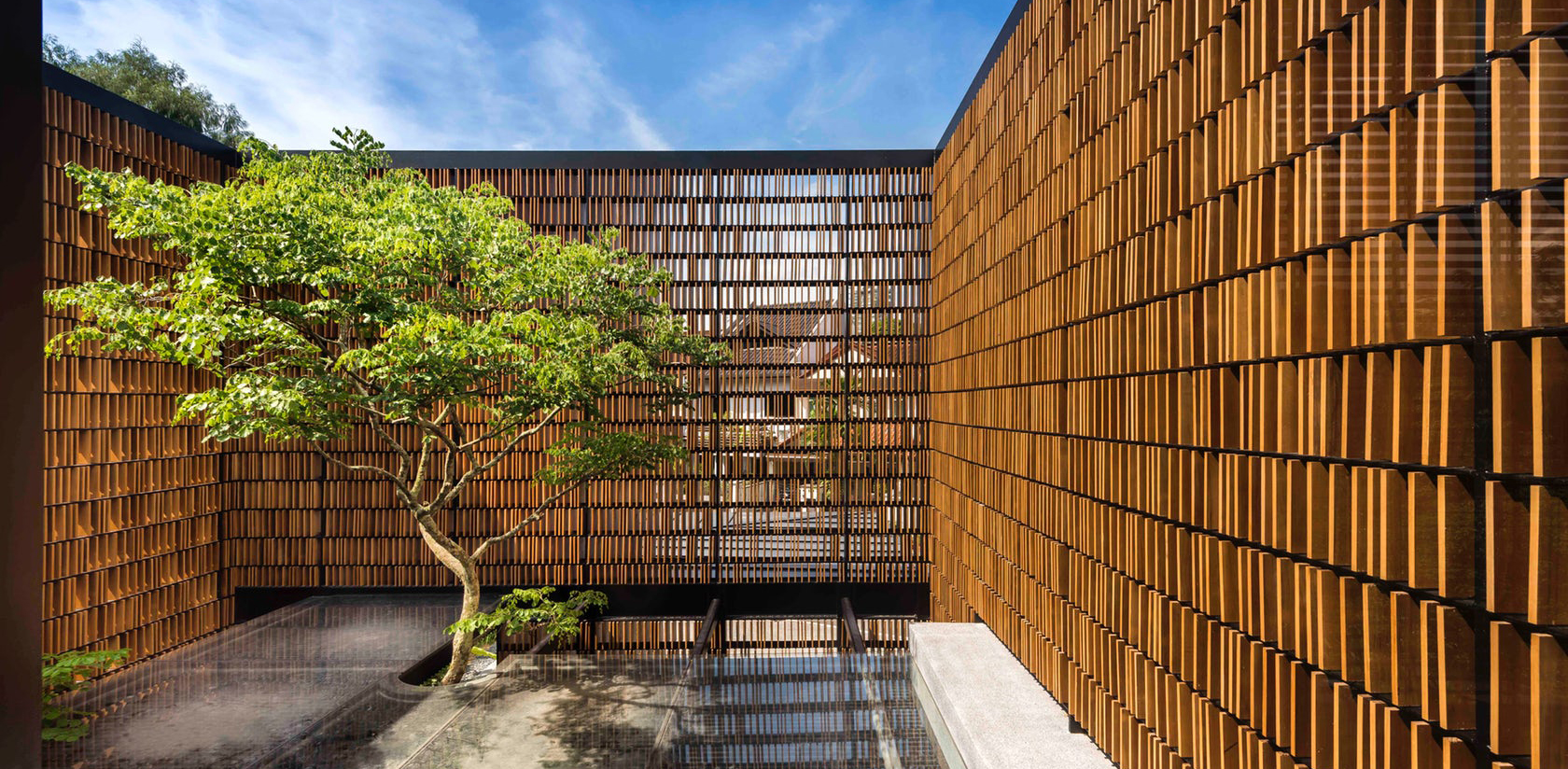Architects: Want to have your project featured? Showcase your work by uploading projects to Architizer and sign up for our inspirational newsletters.
Back in the 80s, a little Disney film called Tron showed us something completely avant-garde for that time, something that reflected the fascination we had with technology, video games and the first personal computers: a minimalist aesthetic dominated by mesmerizing glowing lines to reference the innards of a computing machine.
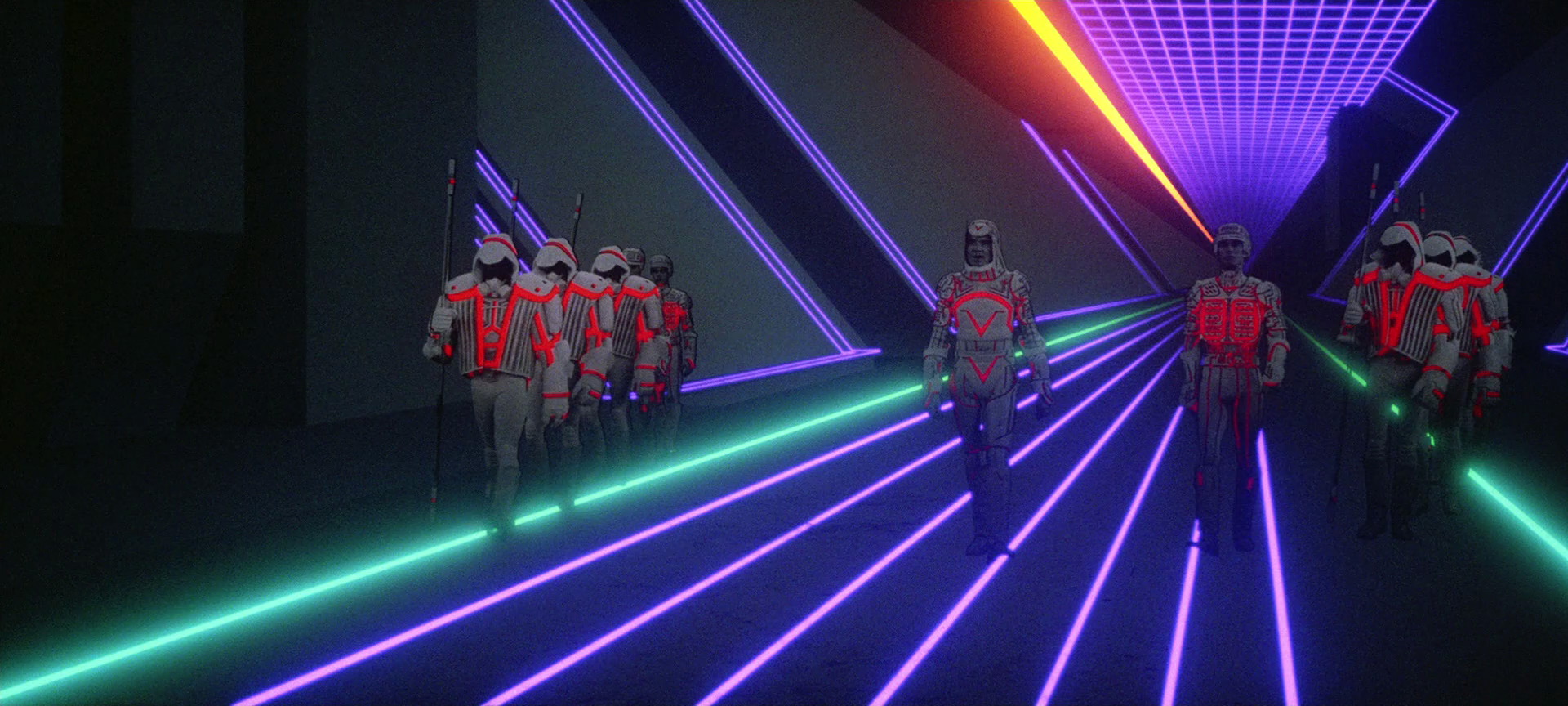
A still from the 1982 movie Tron.
Ironically, lines of light in spatial design became all the rage in the post-Y2K era — and not just in the context of sci-fi movie sets. Cutting-edge office spaces, dramatic building façades, renovated institutions and even private residences have been catching on to this lighting trend. Whereas Tron’s production team used a combination of backlit animation and computer imaging to render the effect, today’s architects and interior designers are creating the real thing thanks to the current crop of innovative products and systems.
If you’re keen on incorporating lines of light into a project, consider first if your design requires — and can accommodate — recessed channels, or if you can provoke the same emotion using surface-mounted lights. Perhaps your goal is not to insert streaks in wall, ceiling or floor planes, but instead to accentuate elements and objects, whether it’s a stair tread, truss or piece of furniture. Finally, if you want to pack similar visual punch sans the fussy LED strip, extrusion and lens cutting, think about composing patterns with readymade linear suspension or other stick-style luminaires.
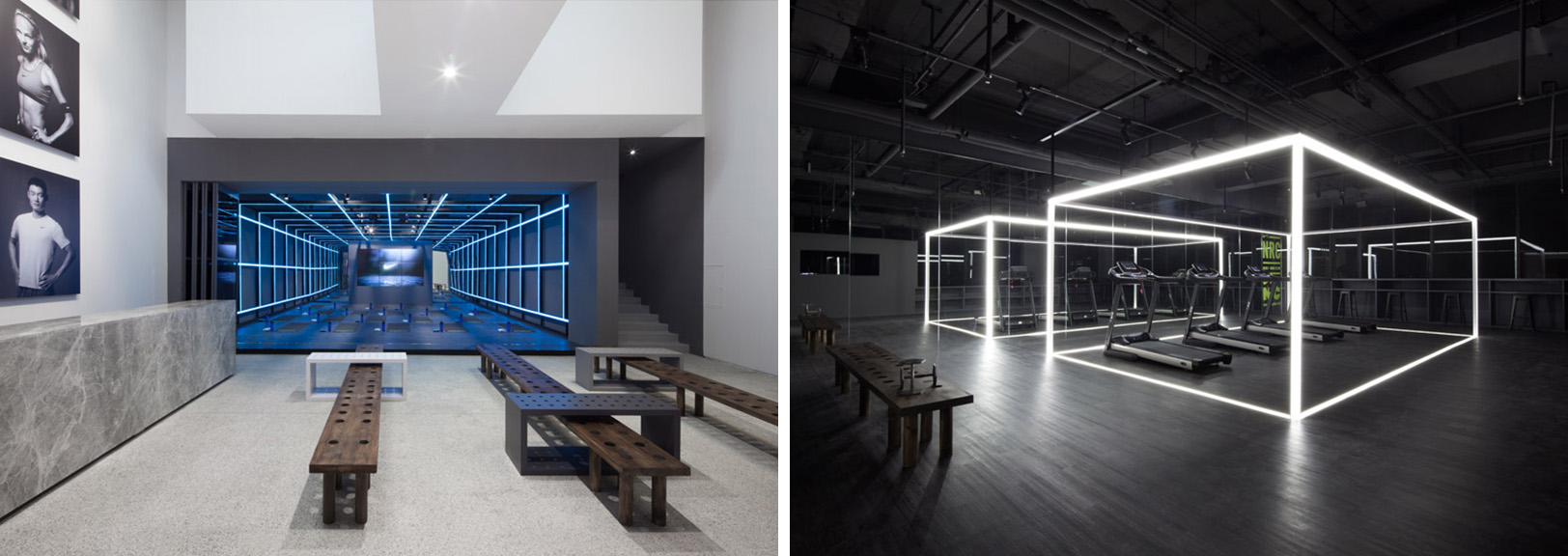
For this Nike Studio in Beijing, COORDINATION ASIA lined various elements with LED strips to evoke energy and movement.
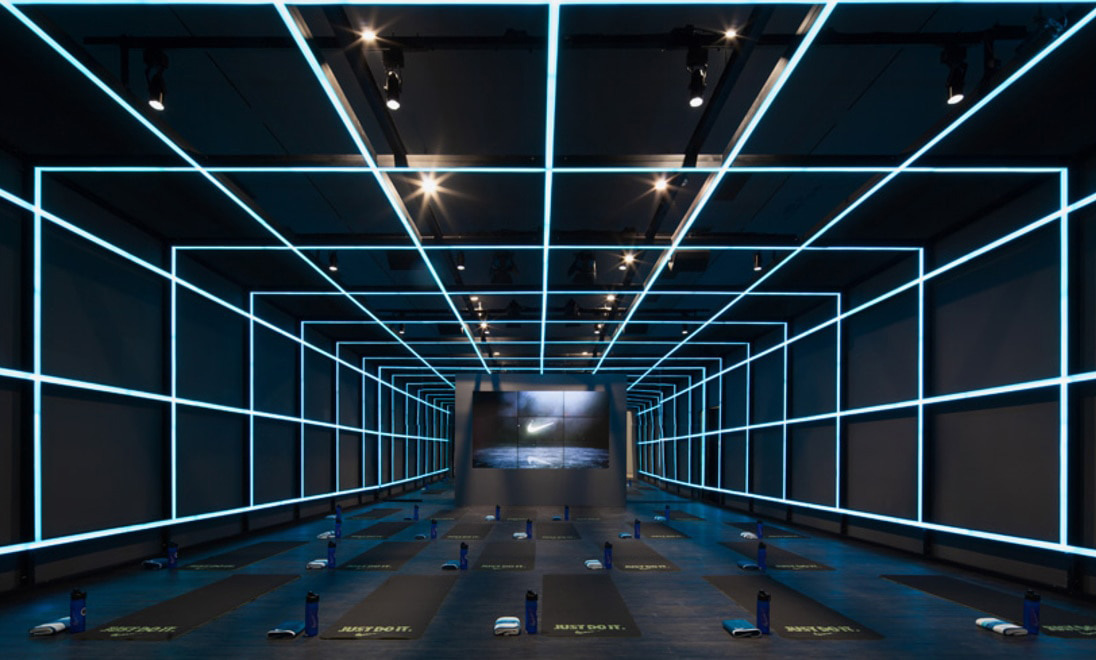
Animate vertical surfaces and ceilings without cutting into them by sourcing an LED light strip or tape (which is basically a strip with pre-applied adhesive) and housing it in a slim-profile extrusion. Typically these channels can be cut to desired length in the field and come with their own end caps and lenses to diffuse and conceal the individual light diodes on the strip.
Aside from having the light protrude slightly from the surface it’s installed on, there are a couple of other drawbacks of going the strip-plus-housing route: First, it’s not suitable on floors or steps as it can be a tripping hazard. And second, it’s difficult to run along curved surfaces. However, manufacturers are making some strides addressing the latter.
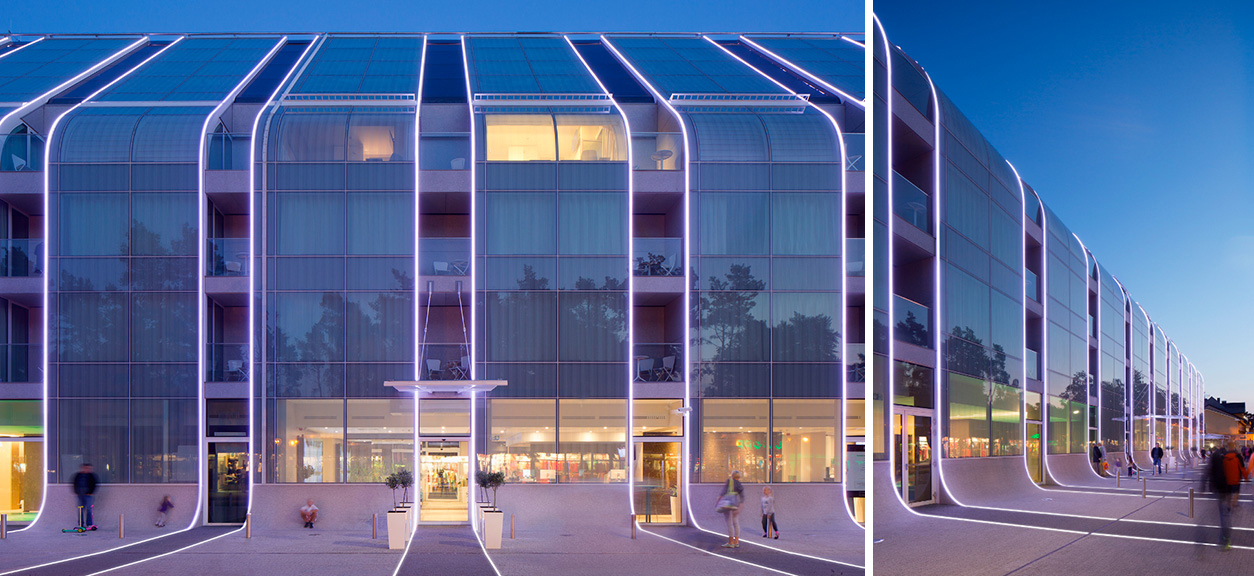
Mateusz Tanski and Piotr Michalewicz’s Baltic Palace Hotel in Poland boasts an eye-catching façade of walls that “flow” down to reference the nearby beach; light strips follow these contours to enhance the façade at night.
For instance, Seattle-based company Solid Apollo recently launched a line of three flexible LED channels. The first, Adaptflex LED Strip Channel is constructed from thin high-grade anodized aluminum that bends to any shape with a radius of 6 inches or more. Meanwhile, Neonizer LED Light Channels NF10 and NF12 mimic the look of traditional neon fixtures with their flexible two-part PMMA plastic bodies.
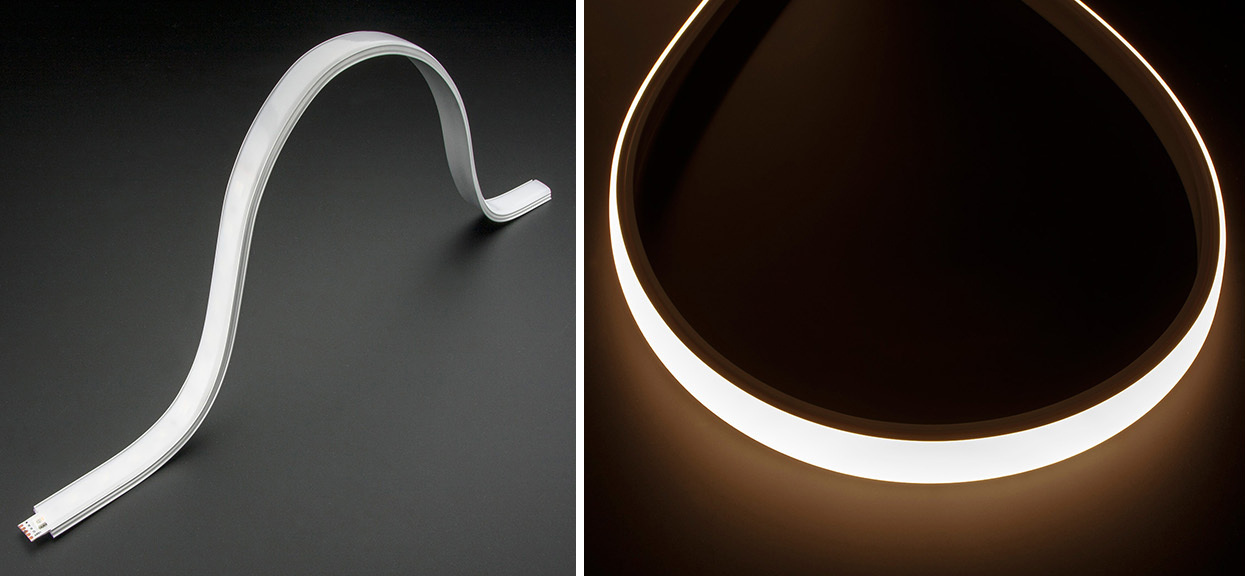
Solid Apollo’s new flexible and bendable channels include the Adaptflex LED Strip Channel (left) and neon-inspired Neonizer LED Light Channels.
Another surface-mounted option that eliminates the need for extrusions or diffusers is Electroluminescent (or EL) tape. This alternative to LED strips uses an electrical charge to activate a layer of phosphor, causing it to glow and spread that illumination evenly throughout a thin, flexible ribbon. EL tapes can be cut at any spot as there are no individual diodes to look out for as in LED strips, they’re already encapsulated in a protective material and they’re flat enough to use on floors, even stair treads. Where it can be inferior to the LED strip is brightness or lumens levels, however.
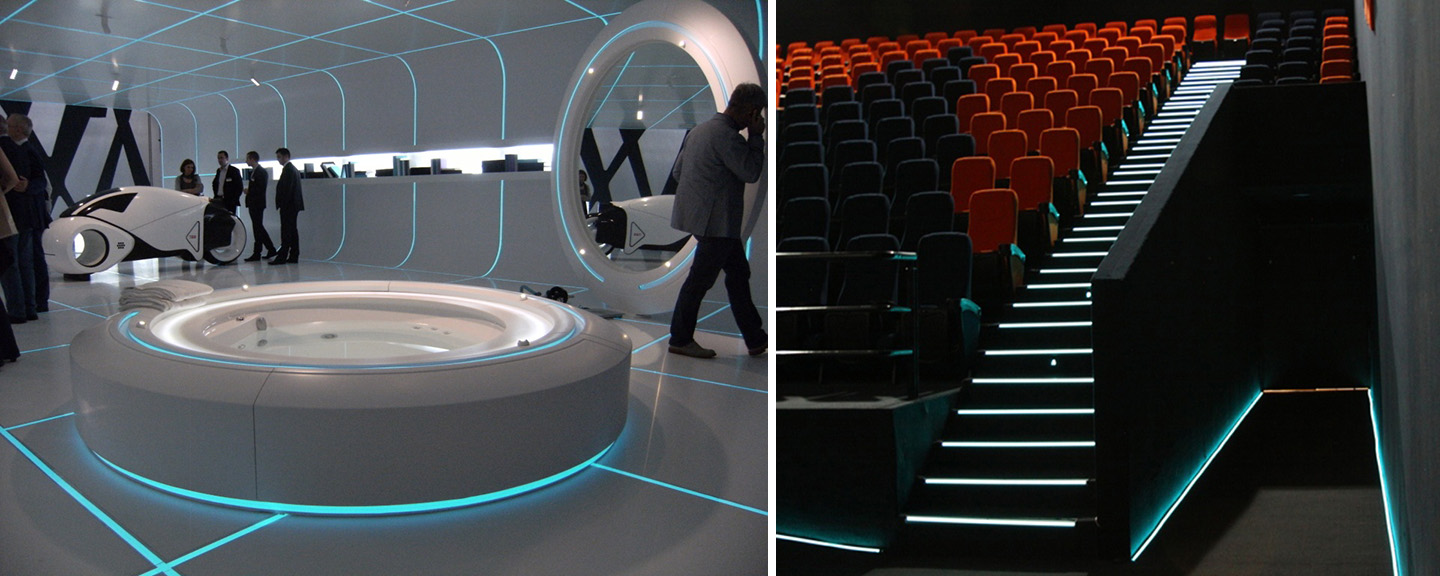
Light Tape
Light Tape is one brand of EL tape that can be used to add interior or exterior accent lighting and delineation. The product comes in several widths ranging from ¼-inch to a very wide 30 inch; the wider sheets are mostly suitable for backlighting applications, such as illuminating an entire countertop in a bar setting, or for cutting out shapes, logos and letters.
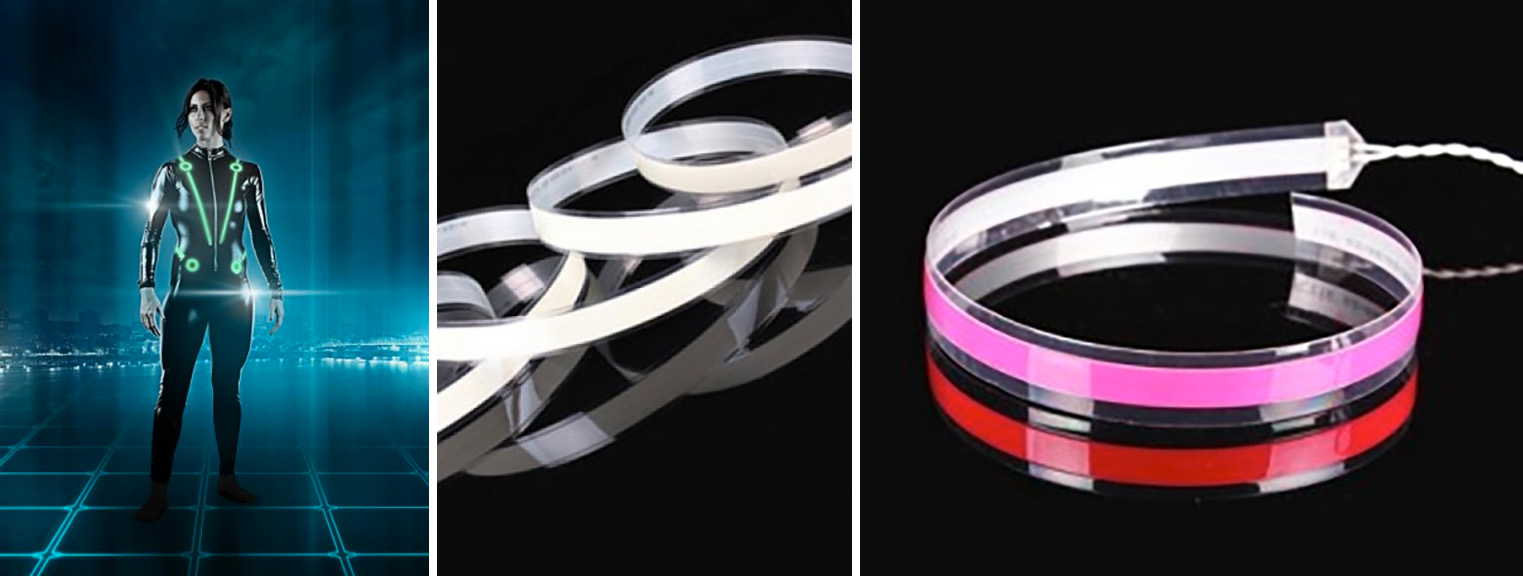
Ellumiglow offers kits for DIY Tron costumes and pre-cut shapes, along with standard EL tape.
Ellumiglow is another maker of EL tape and offers complete kits to meet different project needs. Fabulously — for the “cosplay” crowd — it even produces and sells a DIY Tron costume kit! Like Light Tape, this brand has sheet-style EL products as well, but also a variety of pre-cut shapes such as triangles, circles and semicircles and rounded-corner quarter squares.

FAHOUSE by Jean Verville Architecte implements both surface-mounted and recessed lines of light. Photography by Maxime Brouillet.
Considering recessed systems or off-the-shelf suspension luminaires instead? Check out this article for such products, where we rounded up a few of our favorite recent examples.
Architects: Want to have your project featured? Showcase your work by uploading projects to Architizer and sign up for our inspirational newsletters.

 FAHOUSE
FAHOUSE 
